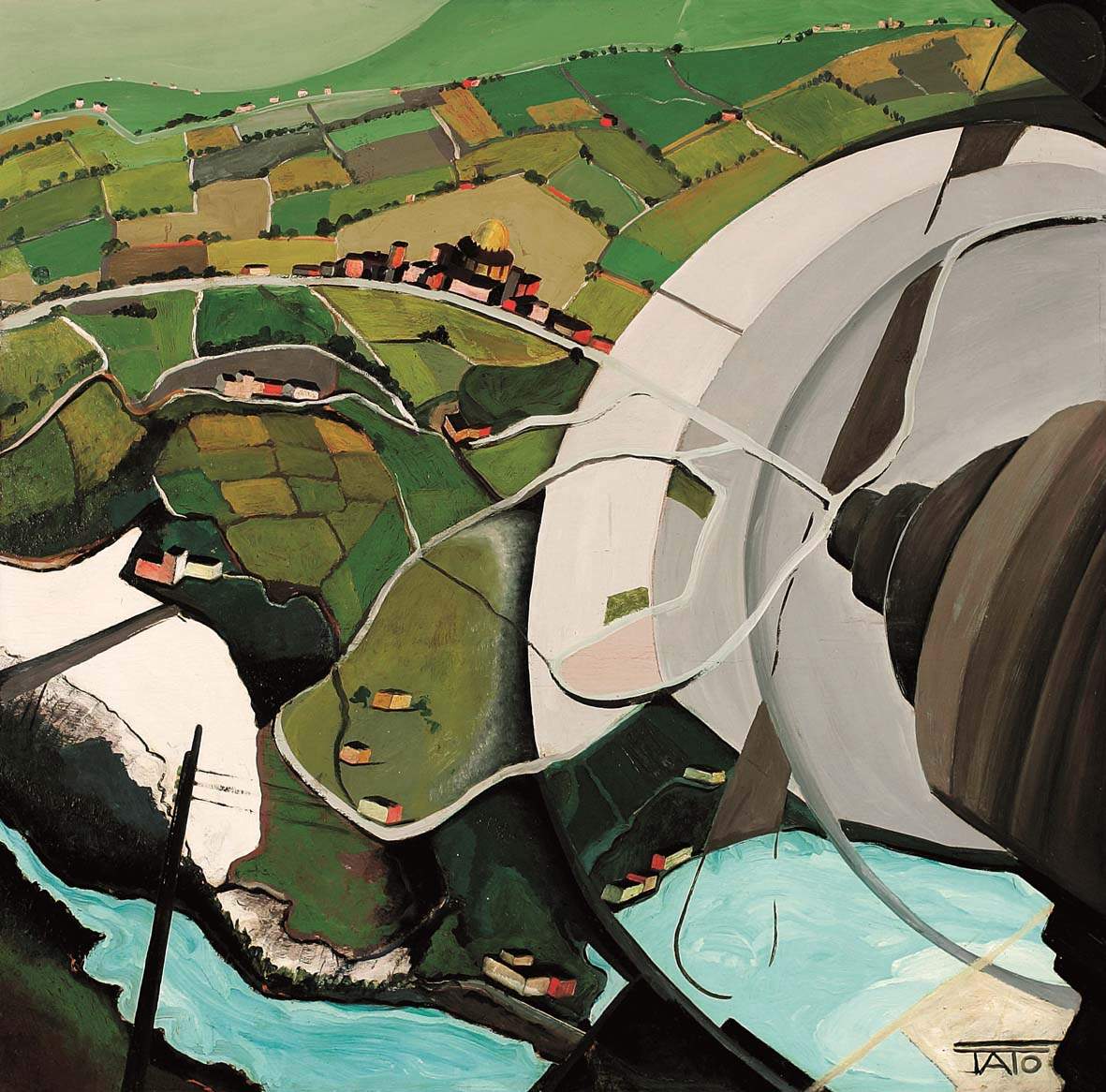A survey ofFuturist aeropainting in Milan, from Bottegantica, which continues to explore the world of Futurism after monographs devoted to individual personalities of Italian Futurism, including Giacomo Balla. Futurist Reconstruction of the Universe (2018) and The Young Boccioni (2021). Now, from October 13 to December 2, 2023, it is therefore the turn of Aeropittura, an Italian avant-garde that developed between the two wars, from the 1920s to the early 1940s.
Curated by Fabio Benzi, among the leading experts on Futurism, the exhibition, entitled Aeropittura futurista. L’avanguardia italiana tra Biennali e Quadriennali, focuses on the participation of the Futurists in the official exhibitions of the period: the International Art Biennales of the city of Venice (1926-1942) and the Quadriennali d’Arte Nazionale of Rome (1931-1943). These were two major events in the national exhibition scene, two occasions of great visibility for the artists themselves. Through these exhibitions, Filippo Tommaso Marinetti, at the head of the movement, sought to secure official recognition for Italian Futurism and its definitive consecration. Through a selection of some 30 works, pictorial and sculptural (almost all of which were exhibited in the Venetian and Roman shows), the exhibition aims to restore the historicity of the Futurist phenomenon and the rich variety and originality of artistic research within it.
In 1926, Marinetti succeeded in gaining the Futurists’ entry to that year’s Venice Biennale. Predominant in this edition was Futurist mechanical art, which was inspired by the language of mechanics to create an art based on the constructive solidity of volumes and lines. This trend is well represented in the exhibition by the bas-relief Derivazione plastica da Bottiglie, Bicchiere, Ambiente (1926) by Ivo Pannaggi, signer with Enrico Prampolini and Vinicio Paladini of L’arte meccanica. Futurist Manifesto (1922). From the subsequent Biennials, however, we can grasp the gradual emergence of a line of research around Aeropittura, the principles of which are expressed in the first draft of the Manifesto dell’Aeropittura Futurista published in 1929. Already at the 1926 Biennale, some works anticipated the growing interest in flight, including the painting Perspectives of Flight by Fedele Azari, a painter and aviator, of whom Fortunato Depero in 1922 made an iconic portrait, which is featured in the exhibition.




The succession of Futurist participations in the Biennials and Quadrennials allows us to grasp the evolution of aeropictorial research. Around the key figure of Prampolini, a more lyrical pictorial current developed, creating original cosmic projections in search of a “new extra-terrestrial spirituality,” represented in the exhibition by works by Prampolini himself, Fillia, Benedetta and Augusto Favalli with Passaggio sulla base (1935). Alongside the cosmic component, there is the other declination of aeropainting, more attentive to the verisimilar rendering of reality and the celebration of technical achievements in aviation. An example of this is Thayaht’s sculpture, Architectural S.55 (1935-1936), which celebrates the geometric and punctiform forms of the seaplane on which Italo Balbo made his Atlantic flight between December 1930 and January 1931. In a similar vein, Alfredo Gauro Ambrosi’s dynamic views from above, such as Virata sull’Arena di Verona (1932), or Tato’s Paesaggio aereo (1932), or even Tullio Crali’s aerial acrobatics in Aerocaccia I (Duello di caccia) (1936) allow us to appreciate unprecedented perspectives based on the artists’ own pioneering experience of flight.
Closing the itinerary chronologically are some paintings with war subjects related to colonial conquests in Africa by Cesare Andreoni and Renato di Bosso, exhibited at the so-called “War Biennales” (1940-1942) during the years when increasingly close ties with the Fascist Regime produced works of a more propagandistic nature and warlike exaltation. Finally, political reasons and necessities also play an important role in the participation in the last editions of the Quadriennali of those years of some abstract artists from the Lombard area as “futurist abstractionists,” among whom Mario Radice stands out. Accompanying the exhibition is a catalog, published by Bottegantica and Grafiche Antiga editions, edited by Fabio Benzi with scientific contributions by the curator, Alberto Cibin and Mariateresa Chirico.
 |
| Milan, an exhibition on futurist aeropainting at Bottegantica |
Warning: the translation into English of the original Italian article was created using automatic tools. We undertake to review all articles, but we do not guarantee the total absence of inaccuracies in the translation due to the program. You can find the original by clicking on the ITA button. If you find any mistake,please contact us.